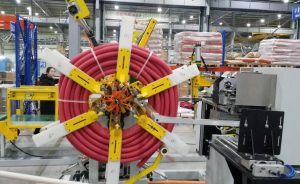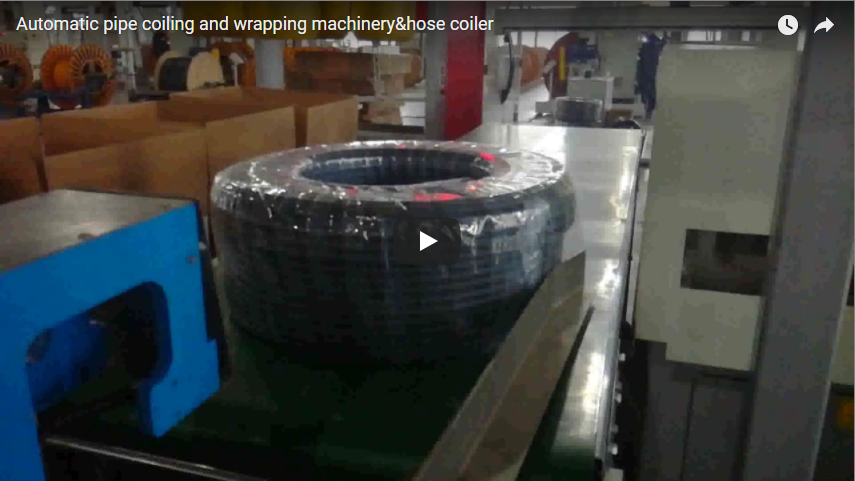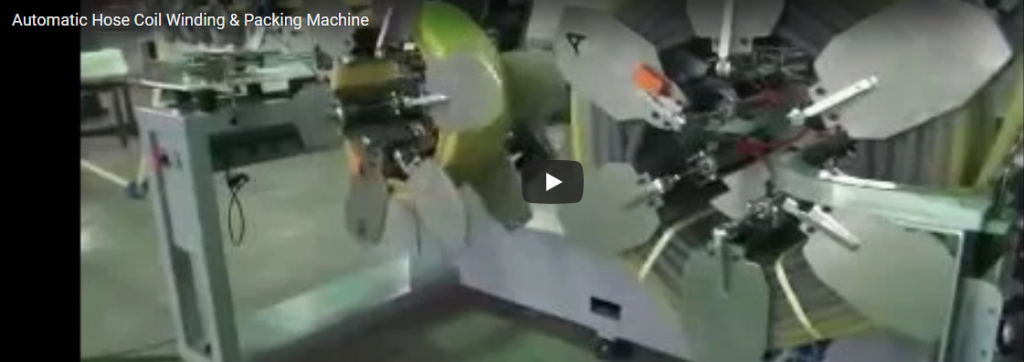Streamlining Operations: A Deep Dive into Automatic HDPE Pipe and Hose Coiling Technology
In today's demanding industrial landscape, efficiency and consistency are paramount, particularly in high-volume manufacturing sectors like plastic pipe and hose production. Manual coiling processes, while traditional, often introduce bottlenecks, inconsistencies, and increased labor costs. The solution lies in advanced automation, specifically with machinery like the automatic online HDPE pipe coiling and hose winding machine. This technology represents a significant step forward, integrating seamlessly into production lines to boost output and enhance product quality.

1. The Challenge: Limitations of Manual Coiling
Before delving into the automated solution, it's crucial to understand the drawbacks of traditional manual coiling methods:
- Inconsistency: Manual coiling can result in variations in coil tightness, diameter, and overall neatness, potentially affecting packaging and end-user experience.
- Labor Intensity: The process requires significant manual effort, increasing labor costs and exposing workers to potential repetitive strain injuries.
- Speed Limitations: Manual coiling speed is inherently limited by human capability, often creating a bottleneck in otherwise high-speed extrusion lines.
- Material Waste: Inaccurate length measurement or handling can lead to increased scrap rates.
2. The Solution: FHOPE's Automatic Online Coiling System
An automatic online HDPE pipe coiling and hose winding machine, such as the system offered by FHOPE, directly addresses these challenges. It's engineered for integration directly into the manufacturing line (hence "online"), typically positioned after the extruder, cooling tanks, and haul-off unit.
Key Technical Specifications:
- Pipe/Hose Diameter Range: 16mm to 32mm
- Coil Length Range: 50m to 200m (configurable)
- Control System: Advanced PLC (Programmable Logic Controller) for precise operation and synchronization.
- Detection: Integrated sensors automatically detect pipe/hose parameters (diameter, length) for accurate coiling adjustments.
- Packaging Integration: Coils are prepared for subsequent automated or manual packaging steps like strapping, wrapping, or bagging.
The machine operates by receiving the continuously produced pipe or hose, guiding it onto a coiling drum. The PLC system meticulously controls the winding speed and traverse mechanism to ensure neat, tightly wound coils of the exact pre-set length. Once the desired length is reached, the machine can automatically cut the pipe/hose and initiate the process for securing the coil (e.g., preparing for strapping) before discharging it.
3. Core Advantages in Modern Manufacturing
Implementing an automatic online coiling system yields substantial operational benefits:
- Enhanced Production Efficiency: By matching the speed of the extrusion line and eliminating manual bottlenecks, overall throughput is significantly increased.
- Improved Product Quality & Consistency: Automation ensures every coil is wound to the same specifications (tension, dimensions), leading to a more professional product appearance and easier handling downstream.
- Reduced Labor Costs & Improved Safety: Automating the coiling process frees up personnel for higher-value tasks and reduces the risk of workplace injuries associated with manual handling.
- Precise Length Control: Sensor-based measurement and PLC control minimize material waste by ensuring accurate coil lengths every time.
- Seamless Line Integration: Designed for "online" operation, these machines communicate with upstream and downstream equipment for smooth, uninterrupted production flow.
4. A Practical Perspective: Witnessing the Impact
Having observed facilities transition from manual to automated coiling, the difference is often night and day. The most immediate impact is the relentless consistency. Coils come off the line uniformly wound, perfectly sized, and ready for the next stage. This eliminates a common source of frustration and quality variation found in manual operations. Furthermore, the ability to precisely synchronize the coiler speed with the extrusion line speed via the PLC is critical – it prevents pipe stretching or slack build-up, ensuring product integrity. Operators, once trained on the HMI (Human-Machine Interface), generally appreciate the reduced physical strain and the ability to monitor the process rather than physically wrestling with the product. The result is a more streamlined, predictable, and ultimately more profitable operation.

5. Key Considerations for Implementation
When considering an automatic coiling system, factors beyond the basic specifications include:
- Line Speed Compatibility: Ensure the coiler can match your maximum extrusion speed.
- Space and Layout: Assess the physical footprint and integration requirements within your existing line layout.
- Changeover Time: Evaluate how quickly and easily the machine can be adjusted for different pipe/hose diameters and coil lengths.
- Control System Integration: Verify compatibility with your existing line control architecture.
- Supplier Support: Consider training, maintenance, and spare parts availability.
Conclusion
The automatic online HDPE pipe coiling and hose winding machine is more than just a piece of equipment; it's a strategic investment in manufacturing efficiency, quality control, and operational resilience. For companies in the competitive plastic pipe and hose industry, adopting such automation is increasingly essential to reduce costs, improve product consistency, and maintain a competitive edge in the market. This technology ensures that the final stage of production matches the precision and speed of the initial extrusion process, delivering high-quality, neatly coiled products ready for distribution.
For further details on specific machine capabilities:
https://www.fhopepack.com/Hose-coiling-and-strapping-machine.html
info@fhopepack.com






